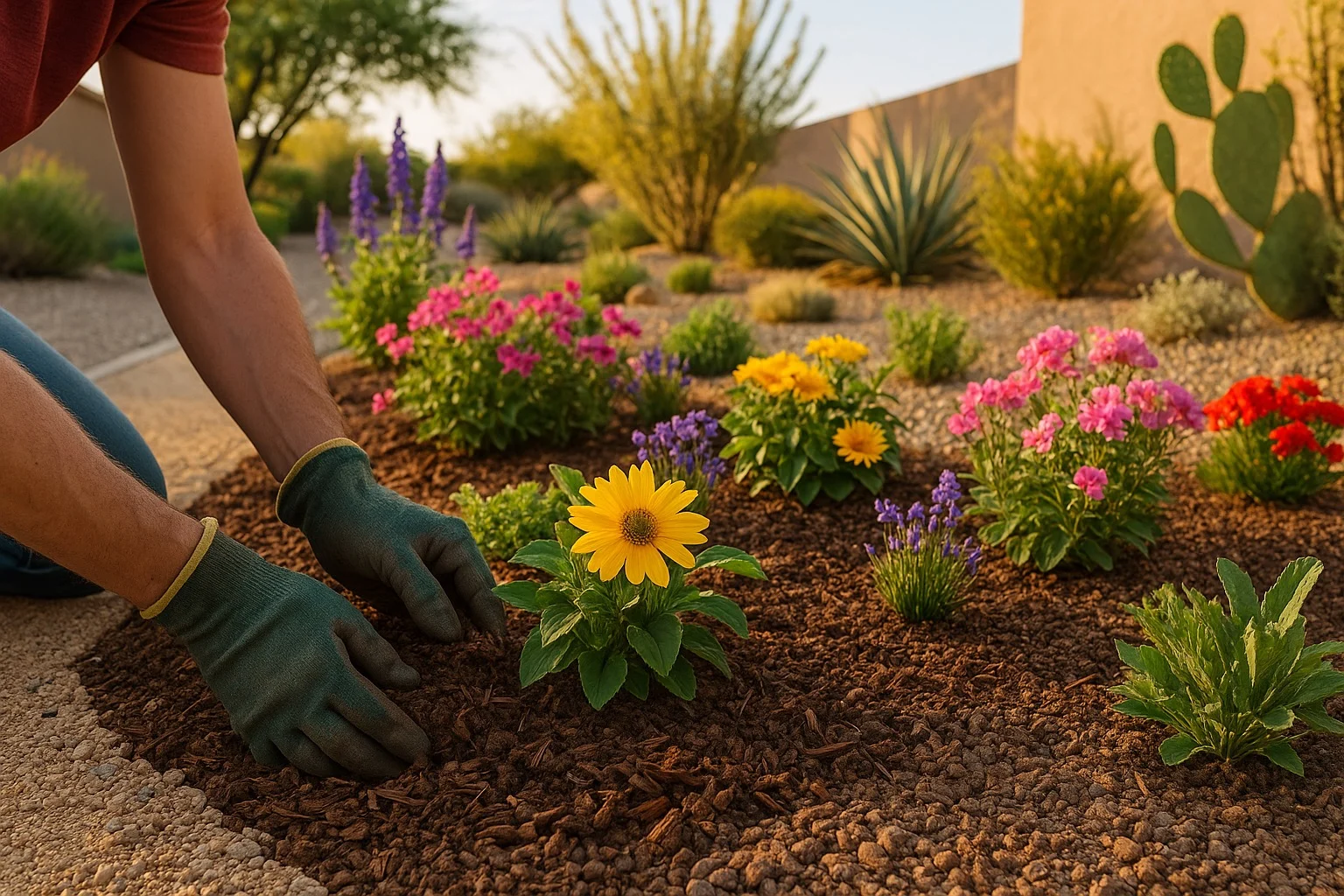As the gentle warmth of spring kisses Queen Creek, it’s time to roll up your sleeves and breathe new life into your garden. With a little know-how and some elbow grease, you can transform your outdoor space into a lush, vibrant haven that will be the envy of the neighborhood. In this article, we’ll unveil the spring care secrets that will help you awaken your Queen Creek garden’s full potential.

Assess and Clean Up
Before diving into the nitty-gritty of spring gardening, take a moment to survey your yard. Winter can be harsh on our gardens, leaving behind debris, dead foliage, and damaged branches. Grab your gloves and pruning shears, and start by clearing away any fallen leaves, twigs, or dead plant material. This not only tidies up your space but also helps prevent disease and pest issues down the line.
Next, inspect your trees and shrubs for any broken, diseased, or crossing branches. Prune these away, making clean cuts at a 45-degree angle just above a healthy bud or branch. This encourages proper growth and maintains the overall health and structure of your plants. Don’t forget to clean and sharpen your tools before storing them away – they’ll thank you come next spring!
Wake Up Your Soil
The secret to a thriving garden lies in its foundation – the soil. After the long winter months, your soil may be compacted, nutrient-depleted, and in need of some TLC. Start by gently loosening the top few inches of soil with a garden fork or cultivator, taking care not to damage any emerging bulbs or perennials.
Once you’ve loosened the soil, it’s time to add some organic matter. Compost, well-rotted manure, or leaf mold are excellent choices, as they improve soil structure, drainage, and fertility. Work a generous layer into the top 6-8 inches of soil, and your plants will reward you with vigorous growth and bountiful blooms.
If you’re unsure about your soil’s nutrient levels, consider conducting a soil test. This will give you a clear picture of any deficiencies or imbalances, allowing you to tailor your fertilization plan accordingly. Your local cooperative extension office can provide testing kits and guidance.
Plan and Plant
With your soil prepped and ready, it’s time to plan your spring planting. Consider the layout of your garden, taking into account factors such as sun exposure, water requirements, and mature plant sizes. Sketch out a rough design, and make a list of the plants you’d like to incorporate.
When selecting plants, opt for varieties that are well-suited to Queen Creek’s climate and soil conditions. Native plants are an excellent choice, as they’re adapted to the local environment and require less maintenance. Don’t be afraid to mix and match annuals, perennials, and bulbs to create a dynamic, ever-changing display.
As you plant, be mindful of spacing requirements. Overcrowding can lead to competition for resources and poor air circulation, which can invite disease. Take the time to dig proper holes, gently tease out root balls, and water your new additions well to help them settle in.
Mulch Matters
Once your plants are nestled in their new homes, it’s time to tuck them in with a cozy layer of mulch. Mulching is a simple yet powerful way to protect and nurture your garden. It helps retain moisture, suppress weeds, regulate soil temperature, and even improve soil health as it breaks down over time.
Opt for organic mulches such as shredded bark, straw, or cocoa hulls, and aim for a layer about 2-3 inches deep. Be sure to leave a small gap around the base of your plants to prevent rot and disease. Not only will mulching make your garden look tidy and well-cared-for, but it will also save you time and effort in the long run.
Water Wisely
As the temperatures rise and your plants kick into growth mode, it’s crucial to keep them well-watered. However, overwatering can be just as detrimental as underwatering. The key is to water deeply and infrequently, encouraging your plants to develop strong, deep root systems.
Check soil moisture levels before watering, and aim to keep the top 6-8 inches consistently moist but not soggy. Water in the early morning or late evening to minimize evaporation, and consider installing a drip irrigation system or using soaker hoses for more efficient, targeted watering.
Don’t forget about your container plants, too! They dry out more quickly than in-ground plants and may require daily watering during hot spells. Invest in self-watering containers or set up a simple drip system to make life easier.
Nurture and Enjoy
As your Queen Creek garden springs to life, take the time to enjoy the fruits of your labor. Stroll through your outdoor oasis, marveling at the vibrant blooms, lush foliage, and buzzing pollinators. But don’t rest on your laurels just yet – regular maintenance is key to keeping your garden looking its best.
Keep an eye out for any signs of pests or disease, and address issues promptly. Deadhead spent blooms to encourage repeat flowering, and don’t be afraid to snip a few stems to bring the beauty indoors. Regularly feed your plants with a balanced, slow-release fertilizer to support healthy growth, and top up mulch as needed.
With a little love and attention, your Queen Creek garden will thrive throughout the spring season and beyond. So go ahead, get your hands dirty, and revel in the joy of watching your outdoor space come alive. Happy gardening!






